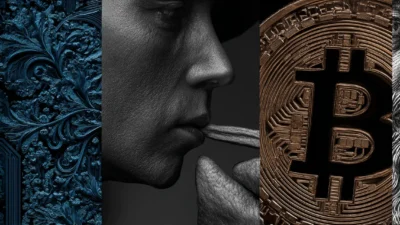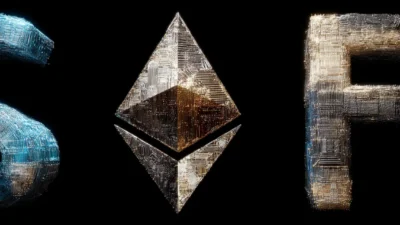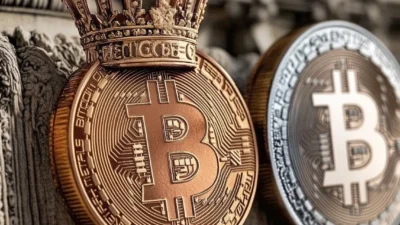TLDR
- Pectra is the next Ethereum upgrade.
- Expect more decentralization, lower gas fees, and an overall more efficient network.
- Testing is set to begin this month and if everything works, it could be live on mainnet by late March.
The Ethereum Pectra upgrade is officially in motion. By that, we mean the announcements that testing is about to begin have recently gone public. Just a year after the Dencun upgrade, Ethereum’s next big transformation is scheduled for launch in April(ish) 2025, with testing already lined up for February.
This isn’t just a minor tweak — Pectra is set to improve everything from transaction fees to data storage to staking, making Ethereum faster, more efficient, and friendlier to use. Stick with us, and we’ll explain everything — from smarter wallets to cheaper gas fees.
Overview of the Pectra Upgrade
Pectra is Ethereum’s third big upgrade since “The Merge” back in 2022. It was the tech answer to making Ethereum better without breaking the whole system. Pectra combines two previously planned upgrades, Prague and Electra, into one cohesive update. Why? More efficiency, less headache.
Here’s a quick snapshot of the highlights:
- Account Abstraction lets you pay gas fees with other tokens (like USDC) and introduces smarter wallets.
- Improved staking options include raising staking limits from 32 ETH to 2,048 ETH and easier withdrawals.
- Advanced tech like Verkle Trees and PeerDAS make Ethereum faster, cheaper, and more scalable.
Whether you’re just buying your first ETH or you’ve been staking for years, Pectra promises to make things simpler, cheaper, and more engaging.
Why Is Pectra Such a Big Deal?
Ethereum upgrades don’t just “happen” — they’re carefully planned leaps forward. And Pectra is no exception. Developers have been working hard to make Ethereum sustainable in the long run while keeping it competitive with other blockchains.
Some of Pectra’s key features and benefits include:
1. Flexible Gas Payments
Gas fees are the bane of every Ethereum user’s life. Especially on Ethereum, known for having users lose money on a trade because of fees during high volume periods.
But with Pectra, it gets interesting.
Account abstraction allows you to pay your gas fees using ERC-20 tokens like USDC or DAI — not just ETH. Feeling generous? Decentralized apps (dApps) can even sponsor your gas fees in some cases. Imagine making a transaction and paying zero fees. Game changer.
2. Improved Staking Options
For stakers, Pectra introduces serious upgrades. Right now, staking is capped at 32 ETH per validator, but with Pectra, the new limit will be 2,048 ETH.
That’s a massive increase, making it easier for larger-scale staking operations and allowing for more participants, which means more decentralization. Plus, withdrawals will be more flexible, and your funds will be more accessible.
3. Next-Level Data Handling
Ethereum’s scalability gets a major boost with technologies like Peer Data Availability Sampling (PeerDAS) and Verkle Trees. These upgrades improve how data is stored and verified on the network, reducing congestion and making the blockchain faster and more efficient.
- PeerDAS lets nodes verify transactions without storing them fully, cutting down on storage costs.
- Verkle Trees replaces older systems to optimize data storage while maintaining quick access and security.
Translation? Less congestion, cheaper transactions, and a smoother Ethereum experience for everyone.
When Is It All Happening?
The Pectra upgrade is scheduled to roll out in two main phases in 2025. Testing is set to begin in February, and if all goes well, the first rollout should happen in late March or early April.
- Phase 1 (March 2025): Features like account abstraction, expanded staking limits, and doubled blob capacity (which reduces congestion) go live.
- Phase 2 (Late 2025 or Early 2026): Deeper technical improvements, like PeerDAS and Verkle Trees, will bring long-term scalability benefits.
How Will the Pectra Upgrade Change the Ethereum Experience?
If you’re an Ethereum user, here’s what Pectra means for you:
1. Lower Gas Fees
Who doesn’t want cheaper transactions? Also, third-party apps and services can cover your gas fees, so sometimes, you may not even need to pay for transactions.
2. Smarter Wallets
Say hello to smarter wallets with features like transaction batching, multisig (multi-signature approvals), and social recovery. Lose your private keys? Social recovery lets a trusted circle help you regain access.
3. It Will Make Layer 2’s Even Better
With better data management and scalability, Ethereum becomes more efficient, which means fewer delays and lower fees — especially for users of Layer-2 solutions like Arbitrum or Optimism.
Get Ready for Pectra
Pectra isn’t the endgame — it’s part of Ethereum’s long roadmap to become faster, more scalable, and more accessible. Vitalik Buterin, Ethereum’s co-founder, has hinted at even more to come, including better ways for Layer-2 networks to support Ethereum’s value.
These upgrades aren’t just about tech — they’re about making sure Ethereum remains the dominant platform for decentralized innovation. Whether you got into crypto for the DeFi, NFTs, or something else entirely, Pectra is another step toward a more inclusive and functional Ethereum.












